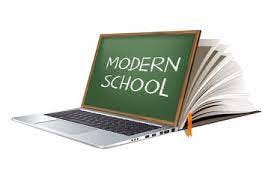Photo Credit: kosuspark.com
Issue #161 Education October 26, 2022
No ads or annoying popups ever! So instead, please see the important information at the bottom of this post. Please keep those “Likes” and comments coming! Thanks!
I’ve previously written about the history of the private and public school systems in America. You can read previous articles in the archive and do a search for “education.”
There are a lot of issues surrounding education in America these days, and one of the issues concerns the school schedule.
In the mid-19th century, when public schools started becoming a standard offering, the school year revolved around the agricultural schedule since most people were farmers of some kind. The school year usually started in late September or early October after the fall harvest, and the year ended in late spring in time for planting. Most public school educations ended at about 8th grade and were just for basic literacy skills, and there were very few high schools. When there were high schools they were usually located in the cities but they still usually followed the September through May schedule.
As the Industrial Revolution progressed, most city schools concentrated on educating students just enough to be able to work in the factories. Vocational classes for boys and home economics classes for girls were the norm. At the turn of the 20th century, only 51 percent of children aged 5 - 19 attended school at all. They were needed to help support the family by working on the farm or in the factories, mines, plants, or in the family business.
Very few people went on to high school, and even fewer got a college degree. In rural areas, people worked on their farms, and in the cities, the men worked in the plants. The woman was expected to get married and have children. The school year was still primarily from September through May.
It wasn’t until after World War II, when the United States government started subsidizing higher education, that university attendance steadily increased. However, it wasn’t until the 1960s and 1970s that most universities started accepting women at the same rate as men, and Black people, who had been denied places at most primarily white universities which had “quotas” for Black people (usually about two per year.)
Still, most public schools enforced compulsory education for students only through age 14 or 16, and the school year schedule remained the same, from around September through May or June. Most people did not achieve a high school education until the mid-1950s when about 80% of Americans had a high school diploma. In 1910, only 9% of Americans graduated from high school, and a high school diploma was considered the “last degree” most people needed. Very few people considered high school as a stepping stone to a college education, because a high school diploma was all that was needed for most of the workforce.
In the 1970s, more women entered the workforce, including getting more professional jobs beyond teaching and nursing. Simultaneously, the types of careers needed in the late 20th century up to now changed radically; more “knowledge” work and less “manual labor” work. Starting in the 1990s, learning technology became almost mandatory at least for the high school grades.
From the 1980s on, the United States government stopped subsidizing higher education with low tuition and low-interest loans, so many people had to resort to high-interest loans. That only encouraged colleges to increase the costs for the students who were expected to pay for their educations with those often predatory loans.
Now, in the first quarter of the 21st century, schooling is rapidly changing. Many school years start earlier (mid-August) and end later (middle or end of June). Not only do schools no longer need to follow an agricultural schedule, but longer school days and longer school years are also deemed necessary for several reasons.
The majority of parents now work outside the home (although there are many more working from home since the pandemic but they’re still working), and having someone at home (almost always the mother) at 3 pm is a thing of the past.
The amount of knowledge the average student needs through high school has greatly increased in the past few decades. It is now necessary that students from elementary school and beyond have access to the latest computers and tablets and to high-speed wireless internet.
In many school districts, there are many more learning options for students besides sitting in a classroom all day. During the school day, students leaving to work a job at a fast food place for half a day have evolved to include opportunities for “pre-career experience” in professional offices and apprenticing with artists, musicians, and companies in the trades.
In many school districts, students in middle school and higher can intern at companies and organizations, and many school students are able to complete the first two years of college at the same time they are completing their last two years of high school. At the end of their senior year, these students are awarded a high school degree and an associate’s degree at the same time. Many of these students, depending on their area of study, have the education and credentials to get jobs immediately, and many others will save time and money because two years of college are already completed.
Because of these changes, the 19th-century standard of a school year based on the farming schedule, and the 20th-century model of pure classroom work through high school have been revised for the 21st century.
Of course, it is necessary to remember that not all schools and not all students have the same opportunities, facilities, or home situations for an ideal educational experience in these modern and rapidly changing times.
The disparities between schooling opportunities and preparedness became painfully obvious when schools were closed to mitigate the rapid spread of COVID-19.
Many students did not have computers or tablets at home or access to affordable high-speed wi-fi so learning via Zoom was almost impossible. With daycare centers and schools closed and parents who could not work from home away at their jobs, it was up to older children to take care of their younger siblings during the school day. The only technology available to many families is prepaid cellular service on their parents’ phones. Many children lost one or both of their primary caregivers (parents and/or grandparents) to COVID. Special services and programs of all kinds that were available to students at school were no longer an option.
So today, as things get back to normal, it is also a good time to rethink the school year schedule and how schools can optimally be valuable for all students in all areas and demographics.
What worked in the 1950s is no longer viable today.
Let us know what you think about how education is working for today’s students vs how your school experience worked (or didn’t) for you.
Help us to grow “We Are Speaking!”
Read and listen to “We Are Speaking” on the iOS app!
Please support us: subscribe for free or upgrade your current subscription to a paid level at only 35¢ per issue.
Please check out the products and services of the TeamOwens313 Global Creative Community Branding and Marketing Academy (GCC BMA) for independent writers and creative professionals. We offer online training, group and one-on-one coaching, a creative networking community, and a 10-week branding and marketing mastermind cohort that begins the first Monday of every month.






